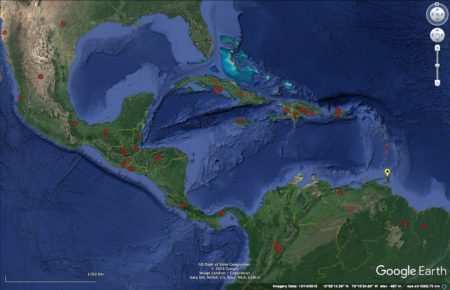First there was Carolina Gold. Now there is “upland red bearded” or “Moruga Hill” rice.
Mr. Dennis had heard about hill rice…through the culinary organization Slow Food USA and the Carolina Gold Rice Foundation, the group that brought back Carolina Gold in the early 2000s. He’d also heard stories about it from elderly cooks in his community. Like everyone else, he thought the hill rice of the African diaspora was lost forever.
But then, on a rainy morning in the Trinidad hills in December 2016, he walked past coconut trees and towering okra plants to the edge of a field with ripe stalks of rice, each grain covered in a reddish husk and sprouting spiky tufts.
“Here I am looking at this rice and I said: ‘Wow. Wait a minute. This is that rice that’s missing,’” he said.
It is hard to overstate how shocked the people who study rice were to learn that the long-lost American hill rice was alive and growing in the Caribbean. Horticulturists at the Smithsonian Institution want to grow it, rice geneticists at New York University are testing it and the United States Department of Agriculture is reviewing it. If all goes well, it may become a commercial crop in America, and a menu staple as diners develop a deeper appreciation for African-American food.
And no, they couldn’t have found it in genebanks. This is what Genesys knows from the region. Trinidad is shown by the yellow marker, rice accessions in red. No rice accessions in Genesys from anywhere near Trinidad, alas.

Someone should really have a systematic look at all those red dots, though.
